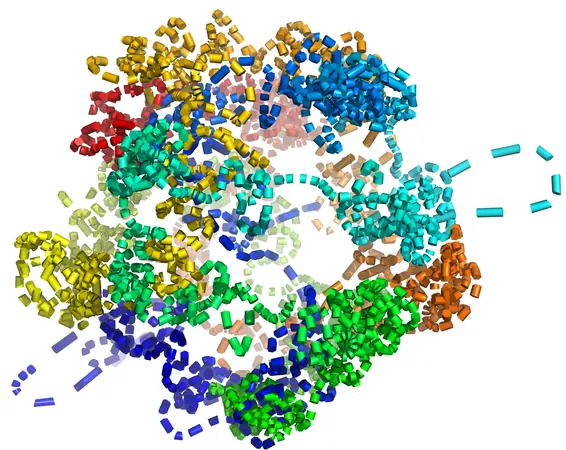
Revolutionary AI Tool Unveils 3D Structure of Chromosomes at the Cellular Level
2025-05-28
Author: Daniel
A Groundbreaking Leap in Genetic Research
In an exciting breakthrough for genetic and biomedical science, researchers at the University of Missouri have created a cutting-edge artificial intelligence tool that can accurately predict the three-dimensional shapes of chromosomes in individual cells. This innovation offers a fresh perspective on the mechanics of our genes.
Understanding Chromosomes: The Building Blocks of Life
Chromosomes are the genetic storage units for our DNA. Each cell houses about six feet of DNA, meticulously folded to fit within its confines. This complex folding not only compresses space but also regulates the activation of genes. When this folding process goes awry, it can disrupt cellular functions and lead to serious health issues, such as cancer.
A Shift from Average to Individual in Genetic Data
Traditionally, researchers have analyzed data averaged from millions of cells, which obscures the unique characteristics of individual cells. However, the innovative AI model crafted by Yanli Wang and Jianlin "Jack" Cheng at Mizzou’s College of Engineering aims to change this narrative.
Wang, a graduate student and leading author, emphasized, "Cells from the same part of the body can fold their chromosomes in radically different ways, which fundamentally influences gene activity." This insight is crucial for grasping how individual cells operate.
Navigating the Challenges of Single-Cell Analysis
Single-cell studies are notoriously difficult due to often messy or incomplete data. The new AI tool, however, is designed to tackle these challenges head-on. It effectively identifies subtle patterns in noisy data and accurately infers the 3D shapes of chromosomes, even when faced with missing information.
Precision Beyond Expectations
Notably, this AI tool demonstrates over twice the accuracy of older deep learning methods for analyzing human single-cell data, effectively revolutionizing the approach.
Democratizing Research for Better Health Outcomes
The researchers have made this powerful software freely available to scientists worldwide, empowering them to delve deeper into gene functionality, understand disease mechanisms, and develop improved treatments.
Cheng, a Curators' Distinguished Professor of Electrical Engineering and Computer Science, stated, "Every single cell can exhibit unique chromosome structures. Our tool allows for detailed study of these variations—paving the way for new health insights."
Looking to the Future: Expanding the Horizons of Genomic Analysis
The team is not stopping here. Plans are underway to enhance the AI tool further, aiming to construct high-resolution structures of entire genomes. Their ultimate goal? To provide the clearest, most comprehensive picture yet of the genetic blueprints within our cells.




 Brasil (PT)
Brasil (PT)
 Canada (EN)
Canada (EN)
 Chile (ES)
Chile (ES)
 Česko (CS)
Česko (CS)
 대한민국 (KO)
대한민국 (KO)
 España (ES)
España (ES)
 France (FR)
France (FR)
 Hong Kong (EN)
Hong Kong (EN)
 Italia (IT)
Italia (IT)
 日本 (JA)
日本 (JA)
 Magyarország (HU)
Magyarország (HU)
 Norge (NO)
Norge (NO)
 Polska (PL)
Polska (PL)
 Schweiz (DE)
Schweiz (DE)
 Singapore (EN)
Singapore (EN)
 Sverige (SV)
Sverige (SV)
 Suomi (FI)
Suomi (FI)
 Türkiye (TR)
Türkiye (TR)
 الإمارات العربية المتحدة (AR)
الإمارات العربية المتحدة (AR)